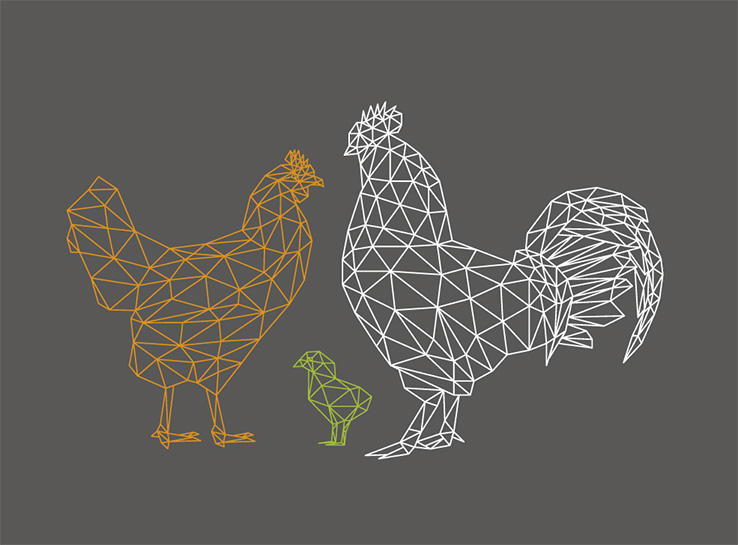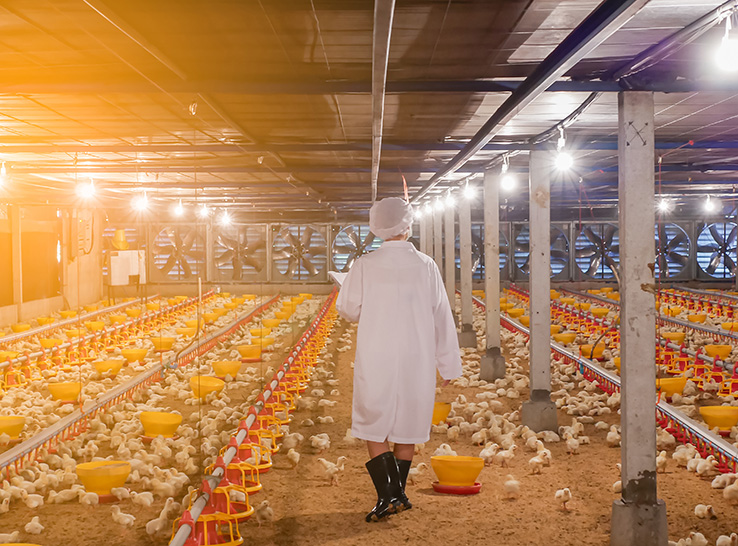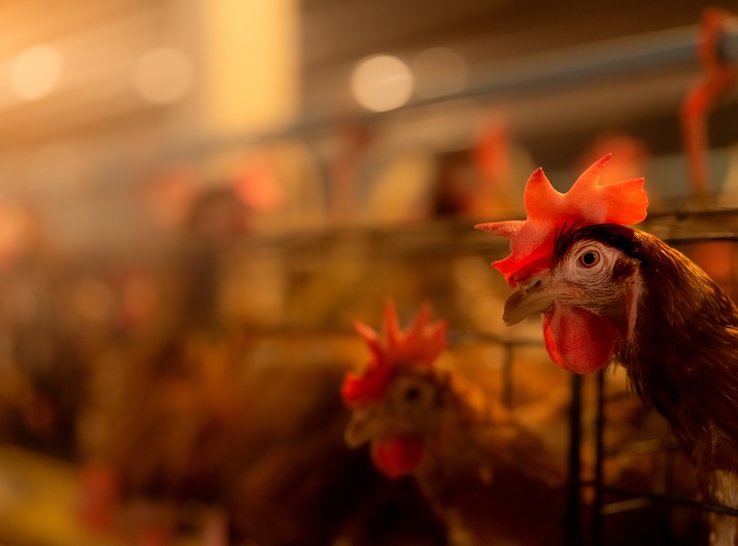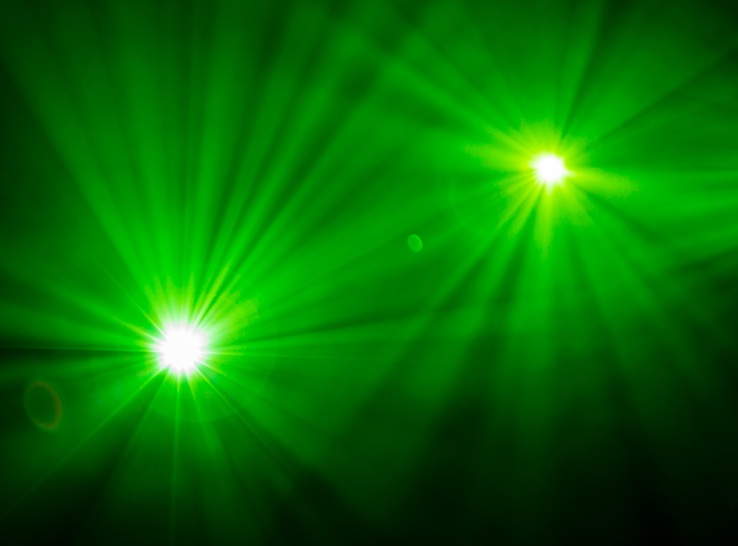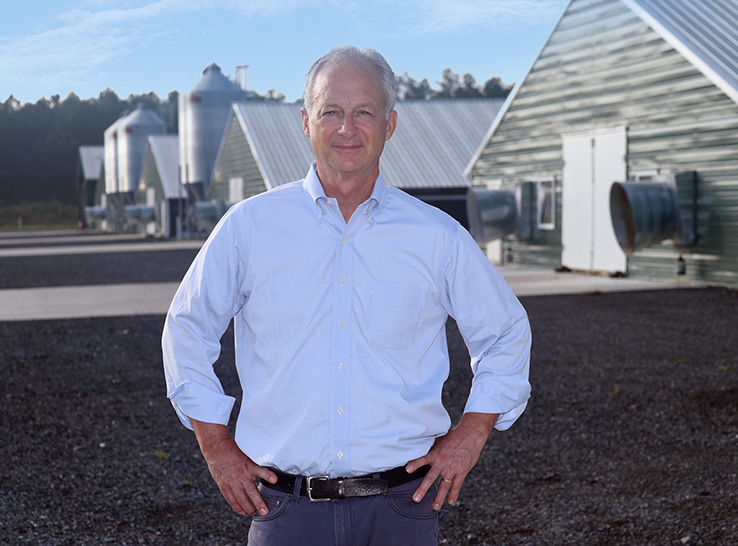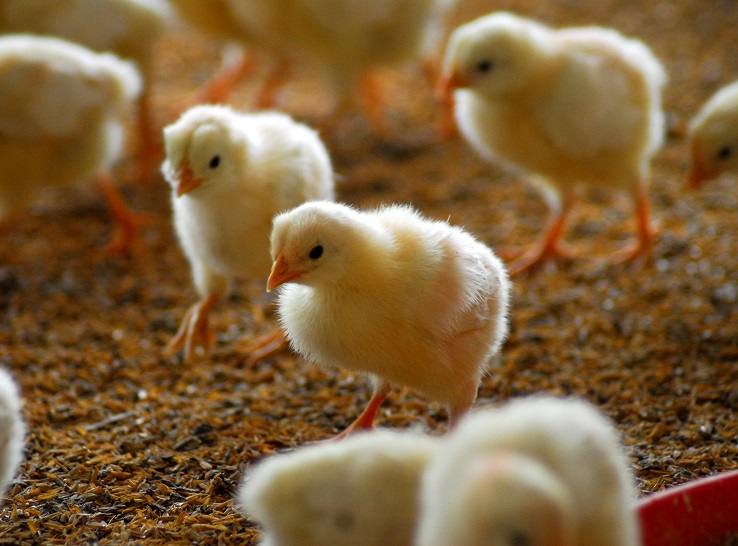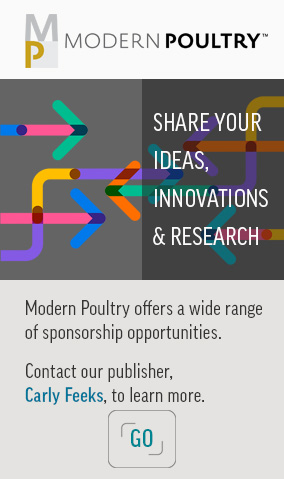Continuous lighting is commonplace in commercial broiler houses, but is that what’s best for the birds?
Providing variable lighting (VL) and other enrichments, such as small huts within a barn, may better meet broilers’ needs and result in better welfare, health and productivity.
Seong Kang, PhD, poultry science post-doctoral fellow at the University of Arkansas experiment station, has investigated the effects of enrichments in commercial broiler houses through numerous studies at Tyson Foods’ Broiler Welfare Research Farm.
Reporting his most recent findings at the 2023 Poultry Science Association’s annual meeting, he explained that effective enrichments are about giving the bird options, letting it choose and encouraging movement.
Variable versus constant lighting
In one study, Kang evaluated constant lighting of 20 lux (20 L), common in commercial broiler houses, with VL that mimics a more natural environment for the bird. The VL program provided 40 lux over the feeding area and lighting of 2 to 5 lux along the sidewalls.
The chicken brain is sensitive to light and triggers specific responses, he pointed out. With the VL treatment, birds were motivated to come to eat and drink in a bright area before returning to the darker area and “take a break.”
“We measured the birds’ behavior and daily activity; with the VL treatment there was a very significant increase in broiler activity and display of natural behaviors, such as dust bathing,” Kang said. Limb issues and lameness are problems for broilers, and the study showed nearly a 30% decline in the number of birds culled due to leg problems among VL-treated birds compared to the 20 L-treated birds.
Consequently, mortalities also were down, and the VL broilers recorded higher daily weight gain and an improved feed-conversion ratio of about 2.2% compared to 20 L birds.
On a side note, he pointed out that the litter quality within the VL-treatment areas was much better and remained drier than with the continuous-lighting treatment.
“The bottom line is that this lighting enrichment increased the birds’ voluntary movement and their mental health (welfare) and we had good performance,” he added.
Investigating impact on the liver
He then wondered whether adding another enrichment would continue the positive impact. “We tested different enrichments and found, by measuring the brain chemistry, that enrichment huts offered the best engagement for the bird,” Kang noted.
Digging further, he wanted to know how the liver responds to the enrichments of VL and enrichment huts. More specifically, because fatty liver syndrome is a common cause of sudden death in chickens, would these enrichments, the increased activity and lower feed-conversion rates help address that?
So, he set up a study to unravel the metabolic pathways related to feed conversion. “We investigated the effects of VL and enrichment huts on the metabolic functions of the liver, including fatty acid synthesis, fatty acid oxidation and gluconeogenesis,” Kang said.
Study materials and methods
Here is a snapshot of the materials and methods for Kang’s VL and enrichment-hut metabolic liver study.
- Four commercial broiler houses were each divided into four sections, using wood shavings.
- Each section received 4,800 day-old broilers, with all source flocks equally represented.
- Two lighting programs, 20 L and VL, using LED lights on a 16L:8D photoperiod, began on day 7.
- To measure the effect of enrichment huts, three small huts per 1,000 square feet were placed in one 20 L and one VL section in each house.
- Liver samples were collected at 49 days of age from 12 birds per treatment.
- Hepatic expressions of carnitine palmitoyl transferase 1 (CPT1a); acetyl-CoA carboxylase alpha (ACACA); fructose-1, 6-bisphosphatase (FBPase); glucocorticoid receptor (GR); and 11 beta-hydroxysteroid dehydrogenease-1 mRNA (11β-HSD1) were determined by quantitative polymerase chain reaction.
The results
Upon completion, the study showed that the CPT1a expression, which helps stimulate fatty acid oxidation in the liver, was significantly higher in VL-treated birds than those in the 20 L sections. Notably, fatty acid oxidation is particularly important during periods of increased energy demands such as low feed intake, exercise, stress and illness.
“When we look at ACACA by light enrichment, it is down significantly. This means fatty acid synthesis is lower,” he said. “But interestingly, the enrichment-hut results were less clear. We don’t know why; we need to study this further.”
Kang pointed out that there was no significant difference of FBPase, GR and 11β-HSD1 expression between the 20 L-control and VL-control birds. However, the enrichment huts significantly stimulated GR in the 20 L-hut birds, and stimulated FBPase and 11b-HSD1 expression in the VL-hut birds compared to birds in the 20 L treatment.
“Taken together, these results suggest that a VL program decreased fatty acid synthesis and activated fatty acid oxidation in the liver of commercial broilers,” Kang noted. “In addition, enrichment huts might have a critical role in the optimal hepatic glucose metabolism of commercial broilers.”

